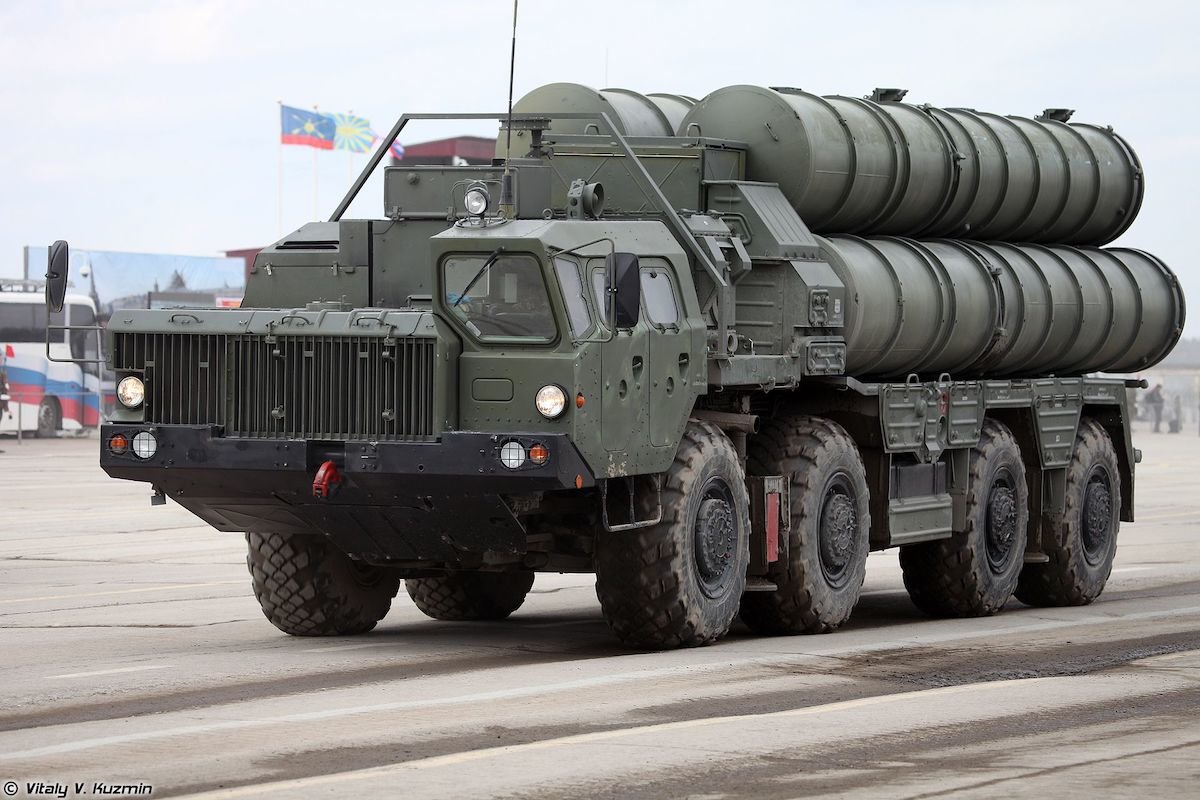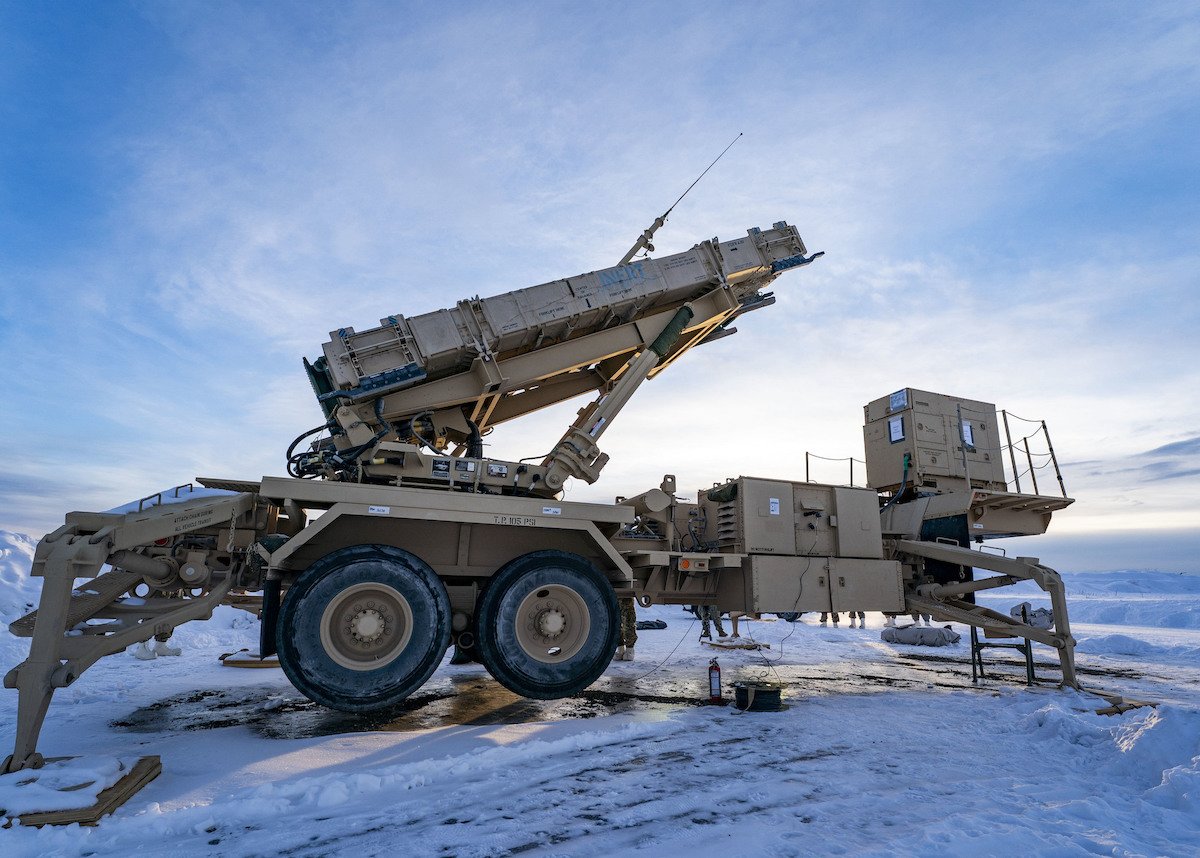
A Russian S-400 air defense system launcher during a Victory Day parade rehearsal in Moscow in 2018. Photo by Dmitriy Fomin via Wikimedia Commons.
KYIV, Ukraine — On the morning of Saturday, Jan. 14, Kyiv’s residents woke to a series of explosions. Yet no air raid alert preceded the blasts, as they almost always do during a Russian missile attack.
The sirens’ silence left people uncertain about what was happening. Looking for information, many turned to their smartphones and scrolled through a reliable lineup of Telegram channels that provide real-time information about Russian attacks. That morning, the Kyiv City Military Administration announced on Telegram that the city was under a missile attack and to take shelter. Then, minutes after the explosions began, the air raid alert finally sounded.
According to Yuriy Ignat, a spokesman for Ukraine’s air force, that morning Russia fired “more than 10” ballistic missiles at Kyiv. The attack damaged one critical infrastructure site in the Kyiv area, as well as several houses.
“I’d like to note that we have no effective defense against ballistic missiles,” Ignat said on Saturday.
The Ukrainian news site Defense Express published photos of debris after Saturday’s strike, indicating that Russia had fired S-400 4896DM air defense missiles re-tasked for use against ground targets. Ukraine’s air force confirmed this week that the missiles used against Kyiv were S-400s launched from Russia’s Bryansk region.
Russia has already been using reprogrammed S-300 air defense missiles against Ukrainian ground targets for about six months. The S-300 can hit targets 75 miles away with a 300-pound warhead. With a range of roughly 150 miles, the more advanced S-400 4896DM missile can carry a 400-pound warhead and travel up to about 2,500 mph — too fast for Ukrainian advanced-warning radars to detect and defend against, Ignat said. Thus, there was no advance warning prior to Saturday’s attack.
“The entire front-line zone has been under attack from these missiles for half a year. Nothing has changed. The only thing that has changed is the direction from which they did it for the first time: Bryansk Oblast,” Ignat said on Jan. 17, Ukrainian agencies reported.
Saturday’s strike on Kyiv was part of a larger Russian missile attack against Ukraine that day comprising 38 missiles — of which Ukrainian air defenses downed 25. In that barrage, Russia fired five Kh-22 cruise missiles from Tu-22M3 bombers flying over Russia’s Kursk region and the Sea of Azov. One of those Russian Kh-22 missiles hit an apartment block in the city of Dnipro. As of Monday, the death toll from that single Russian missile stood at 45, including six children. At least 75 more people were wounded.
Saturday’s strikes also hit energy infrastructure sites in six Ukrainian regions, spurring authorities to carry out emergency power outages.
The Kh-22 has a range of about 370 miles and carries a 2,000-pound warhead. The Ukrainian air force announced on Jan. 17 that it currently has no air defense systems capable of downing Russia’s Kh-22 missiles.
“Since the beginning of Russia’s military aggression, more than 210 missiles of this type have been launched on the territory of Ukraine. Not one was shot down by means of anti-aircraft defense,” Lt. Gen. Mykola Oleshchuk, commander of Ukraine’s air force, announced in a Jan. 15 release. “When used from long distances, the deviation from the target can be hundreds of meters."
Ukrainian forces have now taken back about half of the territory Russia seized after the Feb. 24 full-scale invasion. Having lost the land war’s momentum, Moscow began a strategic missile and drone strike campaign targeted against Ukraine’s power grid. Moscow also aims to terrorize Ukraine’s civilian population and break national morale.
So far, Russia’s missile and drone strike campaign has failed. Ukrainian repair workers continue to outpace the damage done by Russian strikes against electricity sites, preventing a wholesale collapse of the power grid. As for national morale, recent polling shows that an overwhelming majority of Ukrainians remain confident their country will prevail. Those polls also show that Ukrainians, by a wide margin, are firmly against making territorial concessions to Russia for the sake of ending the war.
Ukrainians have learned to live with the blackouts and bombardments. They’ve adopted new routines to use the quiet interludes between Russia’s attacks to get as much done as possible. During those lulls, life resumes its normal rhythms. People buy groceries, go to work, and hit the gym. Shoppers fill the malls, and students attend classes. When the air raid sirens wail, life doesn’t necessarily screech to a halt. It just sort of slows down. And before trudging to the nearest bomb shelter, many Ukrainians first whip out their smartphones and scroll through informative Telegram channels to see what sorts of Russian weapons are inbound.
After nearly a year of full-scale warfare, Ukrainians have learned to analyze and react to air raid alerts based on the threats that trigger them. If it’s another wave of Iranian-made Shahed-136 exploding drones — which lumber along at little more than 100 mph — then there’s usually plenty of time to get to the shelter without having to rush.
During a cruise missile attack, Telegram channels will report sightings as the missiles traverse Ukraine’s territory. If those locations constrict around Kyiv, it becomes clear that Russia has targeted the capital city and it’s wise to take shelter.
When a Russian military aircraft capable of carrying a hypersonic weapon takes off and flies within striking range of Ukraine, the entire country will often go under an air raid alert. For many civilians, that scenario is the least threatening because the threat is not specific to any one city or region.
On Saturday morning, Kyiv’s civilians never had the chance to evaluate the threats inbound to their city before they heard the explosions. Thus, Russia’s use of converted air defense missiles has added another layer of uncertainty and danger to civilians’ lives now that the air raid alerts may not always sound ahead of time. Yet, thanks to the US, Germany, the Netherlands, France, and Italy, Ukraine will soon have the means to defend its airspace from Russia’s missiles.
The US has pledged to give Ukraine one Patriot missile battery, which can defend against Kh-22 cruise missiles, as well as S-300 and S-400 ballistic missiles, Ukrainian Air Force personnel report.
On Jan. 5, Germany also pledged to give Ukraine one Patriot missile battery. And during a meeting with US President Joe Biden on Jan. 17, Dutch Prime Minister Mark Rutte pledged his country would send Patriot missiles to Ukraine, as well. About 100 Ukrainian troops arrived in the US this week to begin training to use the US-made air defense system.

A Patriot M903 launcher station, attached to 5th Battalion, 52nd Air Defense Artillery Regiment, is operated during Exercise ARCTIC EDGE 2022 at Eielson Air Force Base, Alaska, March 16, 2022. Navy photo by Mass Communication Specialist 1st Class Ryan Seelbach.
France and Italy have also approved sending SAMP/T “Mamba” air defense systems to Ukraine. Like the US Patriot missile system, the Mamba complex can defend against high-speed missiles, such as S-300s and S-400s, and Kh-22s.
Ukrainian defense officials estimate that Russia has no more than 100 Iskander mobile, short-range ballistic missiles left. Similarly, Ukrainian and Western officials also say that Russia is running low on its stock of cruise missiles. Thus, Russia’s strike potential is limited by the rate at which it can manufacture new missiles, some experts say. According to Ignat, the Ukrainian air force spokesman, that’s why Russia has turned to using its abundant stocks of S-300 and S-400 air defense missiles for ground-to-ground strikes.
“They are using them more and more often from Kharkiv all the way to the Mykolaiv region, and we see that they were hitting Kyiv. This shows that they have little ballistics [left],” Ignat said in an online briefing on Monday.
Despite their ready availability, Russia’s re-tasked air defense missiles are less accurate than missiles deliberately designed for striking ground targets. That raises the risk of civilian casualties during attacks on urban areas, Ukrainian military officials warn.
According to Defense Express, when working in “ground-to-ground” mode, the S-400 is radar-guided in the initial stage of flight. It then loses contact with its land-based radar and transitions to an internal, inertial navigation system the rest of the way to the target. The warhead detonates either on contact or according to proximity.
Read Next: Kyiv’s ‘Yurt of Invincibility’ Highlights Kazakhstan–Russia Rift

BRCC and Bad Moon Print Press team up for an exclusive, limited-edition T-shirt design!
BRCC partners with Team Room Design for an exclusive T-shirt release!
Thirty Seconds Out has partnered with BRCC for an exclusive shirt design invoking the God of Winter.
Lucas O'Hara of Grizzly Forge has teamed up with BRCC for a badass, exclusive Shirt Club T-shirt design featuring his most popular knife and tiomahawk.
Coffee or Die sits down with one of the graphic designers behind Black Rifle Coffee's signature look and vibe.
Biden will award the Medal of Honor to a Vietnam War Army helicopter pilot who risked his life to save a reconnaissance team from almost certain death.
Ever wonder how much Jack Mandaville would f*ck sh*t up if he went back in time? The American Revolution didn't even see him coming.
A nearly 200-year-old West Point time capsule that at first appeared to yield little more than dust contains hidden treasure, the US Military Academy said.












